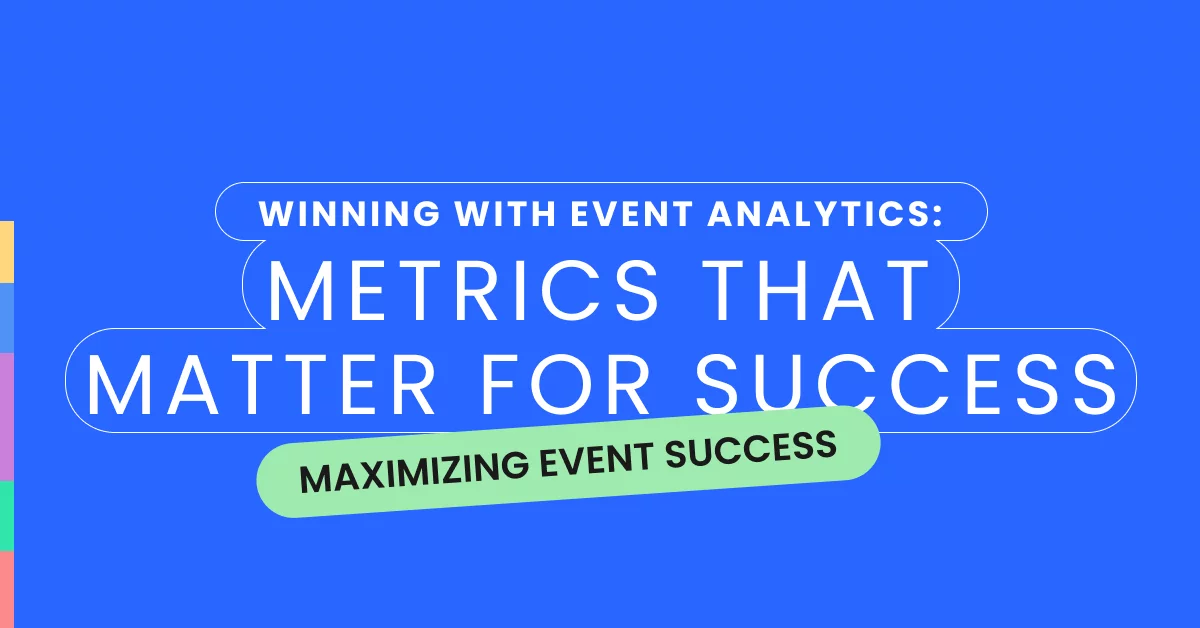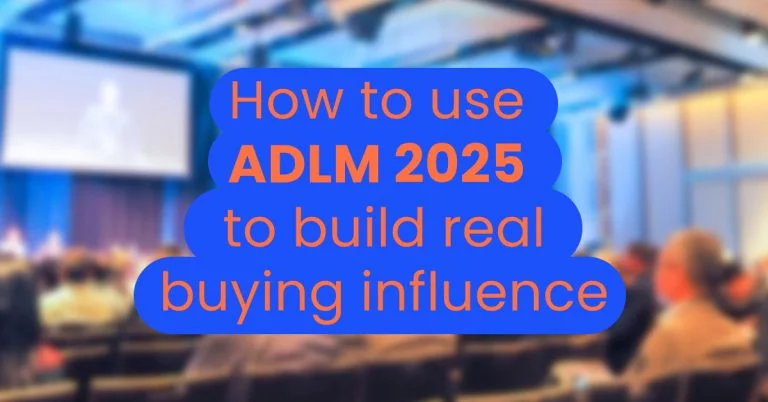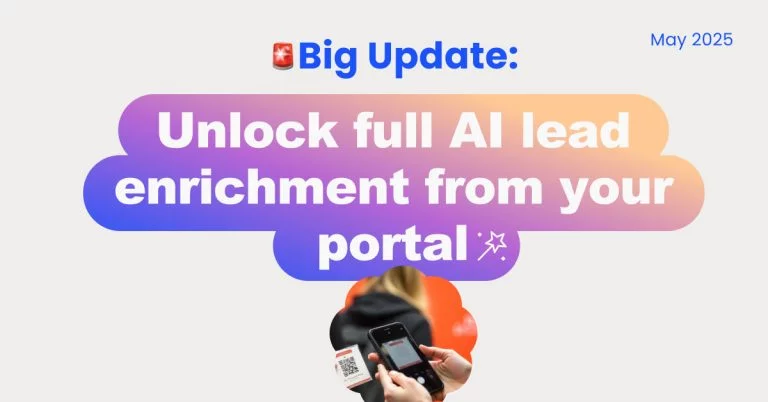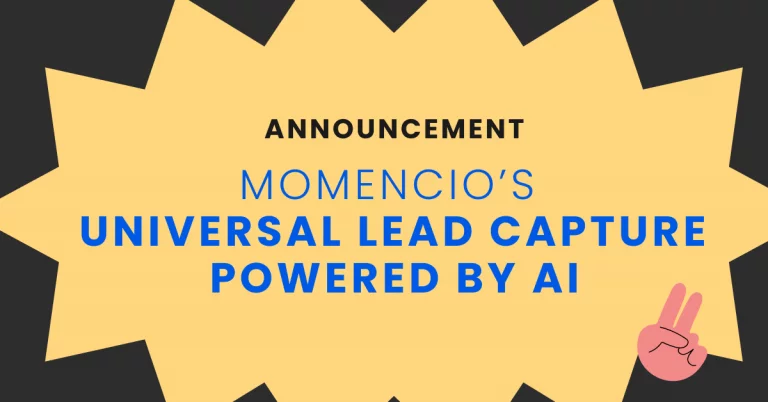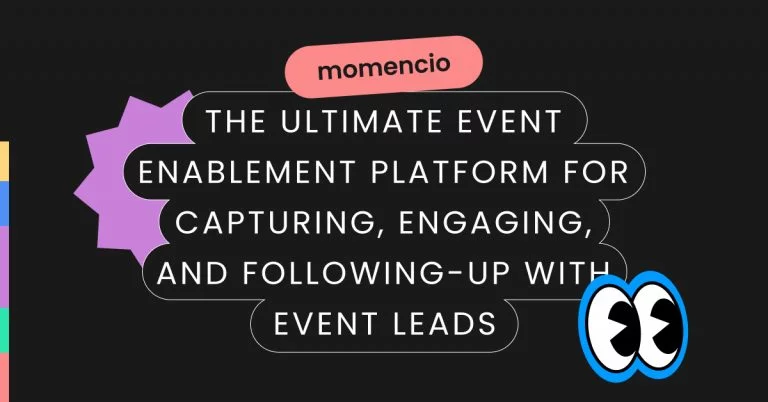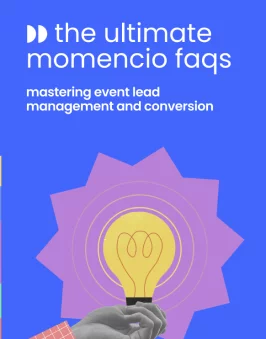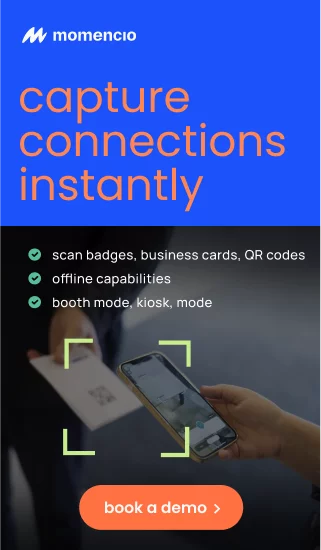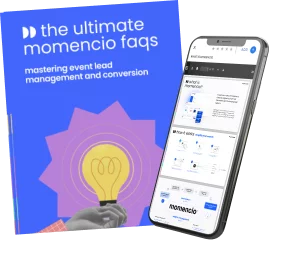Do you recall having assessment sessions in school when you had to provide your comments on everything? Its goal is to perform program evaluations, enhance program effectiveness, and/or guide programming choices. You need analysis to understand things better and develop and perform better in the future.
Everything requires analysis. It can be as basic as making a cake and then analyzing the whole process to determine the ups and downs. Similarly, reviewing your event is critical if you are an event manager.
Evaluation is often forgotten after the occurrence. However, event management offers the organization with several viewpoints. Event analytics can help event planners learn from their mistakes and better understand operational success, among other things.
TL;DR: Event analytics and metrics provide key insights into attendee behavior, engagement levels, and lead quality. Learn how to use this data to optimize event strategies, improve lead follow-ups, and increase overall ROI for more successful events.
Benefits of tracking event metrics
Measuring event performance using event analytics and metrics is critical to demonstrate the value you produce for your company via events.
Here are some more advantages of recording event metrics:
1. Enhance future events
Improve future event engagement to attract more guests and keep them engaged during and after your events.
2. Inform your next best course of action.
They can choose the best next step by delivering thorough event metrics, including first-party data on your guests, to your marketing team and sales agents.
3. Encourage a data-driven culture.
Measuring event analytics and success metrics regularly instills a data-driven approach. And if you have a completely integrated event tech stack that gathers data for you, this is straightforward.
The Impact of Event Planning on ROI
Successful events are methodically planned and performed; they do not happen by luck. Event planners devote substantial time and money to ensuring every element is in place, from selecting the perfect location to curating interesting material.
However, measuring the event’s performance and influence on your ROI might be difficult without a deliberate approach to event planning.
The foundation of every successful gathering is event planning. It entails meticulous considerations such as conference planning and trade show success, where choices made at this stage can have a big impact on the overall success of your event.
To properly grasp the worth of your event, you must thoroughly assess its effect. This is where event analytics can help.
1. Compare registration with attendance
Just because someone registers for your webinar does not guarantee they will attend. The gap between these figures might reveal a lot about the effectiveness of your event marketing campaign.
For example, if just one-third of those who register attend your event, you can reconsider how you promote future events. If, on the other hand, 75% of people who signed up log in, your marketing is most certainly beneficial. In any case, this is useful knowledge for future occurrences. Overall, 40% is the average registration to attendance ratio. So, exceeding this threshold can be a good sign.
Another interesting statistic is how many event participants are first-time visitors vs. repeat clients. This might help you categorize your audiences for more efficient post-event email marketing.
2. Monitor attendee engagement
Engaged audiences result in increased conversion rates, brand loyalty, and more successful events overall.
So, how is event participation measured? You may think that since in-person guests are easy to monitor, tracking their participation is simpler.
However, this isn’t always the case, and here’s why: although in-person events enable coordinators to monitor guests superficially, coordinators can’t follow attendees’ every move and know precisely how they spend their time—or how far down the sales funnel they’ve walked.
CEPs can collect event engagement information on all participants in real time, providing event managers with comprehensive, precise data that an in-person event cannot provide.
3. Assess conversion rates
Lead generation is a popular event metric, and it’s easy to see why: you want to pique visitors’ interest in your business and turn them into customers.
But how many of your leads are prospects? Your event must create quality leads to earn income or establish brand loyalty. Events that fail to generate real interest and action waste time and money.
To attract and measure qualified leads, establish event-specific calls to action, nurture leads via targeted email campaigns, or deliver tailored material during the event to help participants form true connections. These clever strategies link viewers to your brand.
4. Determine the revenue
Events provide possibilities for your organization to engage audiences and enhance revenue. Seeing an increase in income during and after your event indicates that it was a success.
In addition to ticket sales, ad income, and sponsorship figures, your company’s customer relationship management software can give a full breakdown of sales conversions that occurred as a direct consequence of the event.
And, if income was lower than expected, you can go deeper into your event analytics to decide how to enhance marketing efforts and conversions for future events.
5. Survey Results
Attendee feedback is one of the most effective methods to gauge webinar effectiveness. An engaged audience will be more than happy to respond to your polls and surveys. If they aren’t, you can have targeted the incorrect audience, or your guests didn’t find your material intriguing.
Include that information in future webinars when you get results from your polls and surveys. What did your event’s attendees think? Did they learn what they expected to learn? Do they have any recommendations about how you might improve? Which portions of your presentation did they appreciate and connect with the most?
If you can receive answers to these questions, you can create stronger webinars in the future, propelling your company ahead more quickly.
6. Returning Attendees
Your team most likely plans recurrent activities, whether monthly, yearly, or even biannually. The number of repeat visitors attending future events is a useful statistic to track. Returning attendees will demonstrate if your event material is engaging with your target demographic and will provide you with an indication of the value you are producing for them. A large percentage of repeat attendance indicates that you’ve identified the winning recipe.
How to turn event analytics into actionable insights
Tracking event analytics is only part of the equation; the real magic happens when you use those insights to drive decisions, improve future events, and create more meaningful experiences for attendees. Event analytics provide a roadmap of what’s working and what’s not, but interpreting the data and acting on it effectively requires a strategic approach. Here’s how to turn your event analytics into actionable insights:
1. Identify the key metrics that matter most
Not all data is created equal. The first step in leveraging event analytics is determining which metrics align with your specific goals. For example:
- If lead generation is your focus, prioritize metrics like conversion rates, leads captured, and qualified opportunities.
- If your goal is brand awareness, track metrics like social media mentions, website traffic, and attendance growth over time.
- For attendee satisfaction, analyze feedback surveys, session ratings, and engagement levels during the event.
Actionable tip: Before the event, outline your primary objectives and define 3-5 core metrics that will measure success. This clarity will help you filter out noise and focus on data that drives impact.
2. Combine data from multiple sources
Event analytics work best when they provide a holistic view of attendee behavior and event performance. Combining data from multiple sources—such as registration platforms, badge scanners, engagement apps, and social media tools—gives you a comprehensive picture of how your event performed.
For instance, registration numbers alone don’t tell the full story. Pair them with attendee engagement metrics to see how many people actively participated in sessions or downloaded resources. Similarly, blending survey feedback with real-time behavior data can highlight discrepancies between what attendees say they want and how they actually engage.
Actionable tip: Use an integrated platform like momencio to consolidate data from various tools and systems into one dashboard. This simplifies analysis and uncovers patterns that might otherwise go unnoticed.
3. Analyze attendee engagement during the event
One of the most valuable insights event analytics can provide is understanding how attendees engage with different aspects of your event. For example:
- Which sessions attracted the most attendees?
- Which booth activities generated the longest dwell times?
- How many attendees interacted with digital materials like brochures or videos?
By tracking these behaviors, you can identify which elements of your event resonated most and replicate or enhance them for future events.
Actionable tip: Set up real-time notifications for low engagement metrics during the event. If a session is underperforming, consider boosting attendance with a last-minute email or push notification highlighting the session’s value.
4. Use segmentation for personalized follow-ups
Event analytics allow you to segment attendees based on their behavior, preferences, and engagement levels. Instead of sending the same follow-up email to everyone, tailor your communication to reflect each segment’s unique interests.
For example:
- Highly engaged attendees: Send them exclusive offers, premium content, or invitations to future events.
- Moderately engaged attendees: Share session recaps or additional resources to nurture their interest.
- Low engagement attendees: Reach out with a personalized message to re-engage and understand their needs better.
Actionable tip: Use lead engagement data to prioritize follow-ups. Leads with the highest engagement scores should receive immediate attention from your sales team.
5. Pinpoint areas for cost optimization
Event analytics can reveal where you’re spending resources effectively—and where you’re not. For example, if certain booths or sessions consistently underperform, it might be time to reallocate budget or explore alternative formats. Similarly, tracking the ROI of different marketing channels can help you focus on those that deliver the best results.
Actionable tip: Analyze metrics like cost per lead, session attendance, and booth traffic to identify underperforming areas and reallocate funds for better impact.
6. Improve content based on attendee feedback
Feedback surveys and session ratings are goldmines of information for refining your event content. Look for recurring themes in attendee comments to understand what worked well and what needs improvement. For instance:
- Did attendees find the sessions informative and engaging?
- Was the event format conducive to networking?
- Were there any logistical challenges that affected the experience?
Actionable tip: Use a mix of qualitative and quantitative feedback to shape future content. If a session consistently receives low ratings, consider replacing or reworking it.
7. Benchmark against past events
Event analytics become even more powerful when used to track progress over time. By comparing data from multiple events, you can identify trends and measure improvement.
For example:
- Are registration numbers steadily increasing?
- Is the percentage of returning attendees growing?
- Are conversion rates improving with each event?
Actionable tip: Set up benchmarks for key metrics and evaluate whether each event meets or exceeds them. Use this data to showcase the impact of your events to stakeholders and secure future budgets.
8. Turn insights into actionable strategies
The ultimate goal of event analytics is to drive better decisions. Once you’ve gathered and analyzed your data, create a concrete action plan based on your insights. For example:
- If engagement was highest during interactive sessions, incorporate more hands-on elements in future events.
- If attendees struggled to find specific booths, invest in better wayfinding tools or signage.
- If certain marketing channels delivered low ROI, focus your efforts on more effective platforms.
Actionable tip: Assign owners to each action item and set deadlines to ensure your insights translate into measurable improvements.
By turning event analytics into actionable insights, you can continuously refine your event strategy, maximize ROI, and create experiences that resonate with your audience. momencio makes this process even easier by providing real-time analytics, integration with your existing tools, and actionable reports that help you make data-driven decisions.
Using momencio for Event Analytics
The correct tools and technology are required to perform successful event analytics. momencio, a complete event management tool, can assist you. momencio streamlines event planning, administration, and analytics with its features and capabilities, enabling you to concentrate on what matters most – delivering a great event.
momencio provides real-time event analytics to event planners and field marketers by merging event management and event technology. momencio provides a comprehensive approach to event analytics, from attendee engagement to lead creation and post-event follow-ups.
